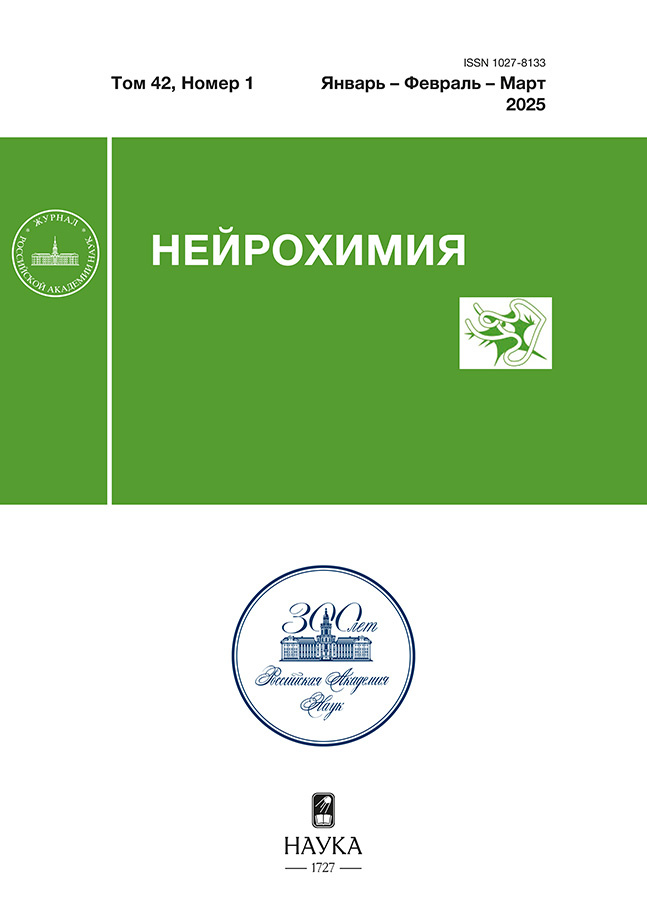Expression of Farnesylated EGFP in Primary Neocortex Culture Neurons Results in Impairs Dendritic Spike Development
- Authors: Smirnova G.R.1, Idzhilova O.S.1, Abonakour A.1, Malyshev A.Y.1
-
Affiliations:
- Institute of Higher Nervous Activity and Neurophysiology, RAS
- Issue: Vol 42, No 1 (2025)
- Pages: 149–157
- Section: Articles
- URL: https://kld-journal.fedlab.ru/1027-8133/article/view/686333
- DOI: https://doi.org/10.31857/S1027813325010127
- EDN: https://elibrary.ru/DKCJUD
- ID: 686333
Cite item
Abstract
Genetically encoded fluorescent proteins are widely used in biological research in general and in neurobiology in particular. When using these tools, it is important that the expression of the fluorescent protein does not disrupt the natural physiological processes in the cell. Addition of the farnesylation motif to fluorescent proteins leads to their anchoring in the plasma membrane, which is often used to visualize fine details of cell morphology, such as dendritic spines. In our work, we investigated the development of spines in primary cultured neocortical neurons by transfecting cells with farnesylated and unmodified EGFP by electroporation in suspension on the day of planting. It was found that neurons expressing farnesylated EGFP demonstrate pronounced disturbances in spine development, in particular, these cells were characterized by longer spines with more filopodia-like structures, which is typical for various pathological conditions. Therefore, when using farnesylated fluorescent proteins in experiments, it is necessary to take into account their possible negative impact on the development of various membrane structures of the cell, in particular neuronal spines.
Keywords
Full Text
About the authors
G. R. Smirnova
Institute of Higher Nervous Activity and Neurophysiology, RAS
Email: malyshev@ihna.ru
Russian Federation, Moscow
O. S. Idzhilova
Institute of Higher Nervous Activity and Neurophysiology, RAS
Email: malyshev@ihna.ru
Russian Federation, Moscow
A. Abonakour
Institute of Higher Nervous Activity and Neurophysiology, RAS
Email: malyshev@ihna.ru
Russian Federation, Moscow
A. Yu. Malyshev
Institute of Higher Nervous Activity and Neurophysiology, RAS
Author for correspondence.
Email: malyshev@ihna.ru
Russian Federation, Moscow
References
- Day R.N., Davidson M.W. // Chem. Soc. Rev. 2009. V. 38. P. 2887–2921.
- Cranfill P.J., Sell B.R., Baird M.A., Allen J.R., Lavagnino Z., de Gruiter H.M., Kremers G.-J., Davidson M.W., Ustione A., Piston D.W. // Nat. Methods. 2016. V. 13. P. 557–562.
- Cormack B.P., Valdivia R.H., Falkow S. // Gene. 1996. V. 173. P. 33–38.
- Kostyuk A.I., Demidovich A.D., Kotova D.A., Belousov V. V, Bilan D.S. // Int. J. Mol. Sci. 2019. V. 20. P. 4200.
- Craven S.E., El-Husseini A.E., Bredt D.S. // Neuron. 1999. V. 22. P. 497–509.
- Grabrucker A.M., Vaida B., Bockmann J., Boeckers T.M. // J. Neurosci. Methods. 2009. V. 181. P. 227–234.
- Cane M., Maco B., Knott G., Holtmaat A. // J. Neurosci. 2014. V. 34. P. 2075–2086.
- Lim S.T., Antonucci D.E., Scannevin R.H., Trimmer J.S. // Neuron. 2000. V. 25. P. 385–397.
- Kitamura A., Nakayama Y., Kinjo M. // Biochem. Biophys. Res. Commun. 2015. V. 463. P. 401–406.
- Lu J., Wu T., Zhang B., Liu S., Song W., Qiao J., Ruan H. // Cell Commun. Signal. 2021. V. 19. P. 60.
- Амая М., Айзенхабер Б., Айзенхабер Ф., ван Хук М.Л. // Молекулярная биология. 2013. Т. 47. С. 717–730.
- Kim A.K., Wu H.D., Inoue T. // Sci. Rep. England, 2021. V. 11. P. 16421.
- Watts S.D., Suchland K.L., Amara S.G., Ingram S.L. // PLoS One. 2012. V. 7 P. e35373–e35373.
- Rodgers W. // Biotechniques. 2002. V. 32 P. 1044–1051.
- Keiser M.S., Chen Y.H., Davidson B.L. // Curr. Protoc. Mouse Biol. 2018. V. 8. e57
- Yuste R. Dendritic Spines. The MIT Press, 2010.
- Son J., Snng S., Lee S., Chang S., Kim M. // J. Microsc. 2011. V. 241. P. 261–272.
- Hayashi Y., Majewska A.K. // Neuron. 2005. V. 46. P. 529–532.
- Bourne J., Harris K.M. // Curr. Opin. Neurobiol. 2007. V. 17. P. 381–386.
- Fiala J.C., Feinberg M., Popov V., Harris K.M. // J. Neurosci. 1998. V. 18. P. 8900–8911.
- Wisniewski K.E., Segan S.M., Miezejeski C.M., Sersen E.A., Rudelli R.D.// Am. J. Med. Genet. 1991. V. 38. P. 476–480.
Supplementary files















